Djibouti Recipes! From Mok-cha, a hot and spicy fish stew, to the popular dessert Halwa, Djibouti recipes are an amazing combination of African, French, Arabic and Indian flavors. Learn how to make traditional Djibouti recipes that will satisfy your taste buds. You’ll also get a glimpse of the unique history and culture behind this unique cuisine. With these simple, flavorful recipes, you’ll be able to bring a bit of the magic of Djibouti right into your kitchen.
Discover the best of local cuisine and savory traditional dishes that have been passed down for generations. From the savory stews and street wraps cooked in colorful curries to the sweet scented desserts and aromatic teas, Djibouti has a rich and varied culinary heritage that is sure to tantalize the taste buds. Learn how to prepare these simple yet flavorful dishes with step-by-step instructions.
Cooking up a delicious meal from Djibouti can bring an exotic flair to your kitchen without venturing too far from home. From succulent spiced stews to indulgent desserts, Djibouti is a melting pot of flavors that you won’t want to miss. Whether you’re a seasoned traveler, an adventurous foodie, or just love trying new and exciting dishes, you’re sure to find something.
So, are you craving something delicious and different? This small country tucked away in the Horn of Africa is known for its unique blend of flavors inspired by Europe, Arabia, and Asia have shaped Djibouti’s cuisine into a delectable variety of dishes like goat soups, spicy lamb stews, and hearty flatbreads.
 11 Scrumptious Djibouti Recipes
11 Scrumptious Djibouti Recipes
1. Laxoox, or galettes Djiboutiennes
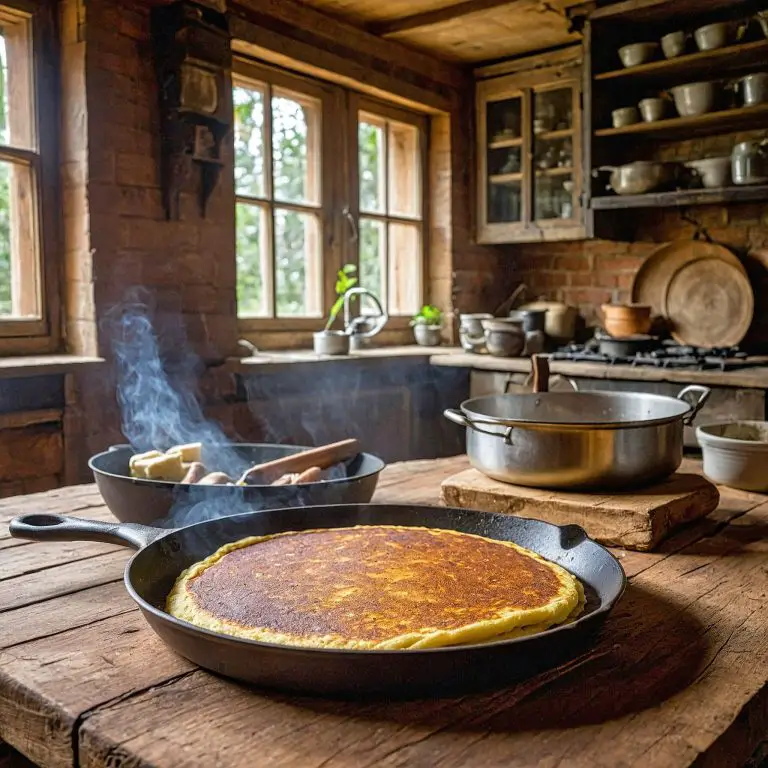
Laxoox is a spongy flatbread similar in appearance to Ethiopian injera but unique in its texture and taste. It is made with a batter of wheat or sorghum flour, yeast, and water, allowed to ferment before cooking on a hot griddle. The result is a soft, porous bread with tiny holes across its surface, perfect for soaking up stews and sauces.
In Djibouti recipes, laxoox is a daily staple, served at breakfast with tea or alongside lunch and dinner dishes. Its versatility lies in how it complements savoury meals like fah-fah or sweeter spreads such as honey. Laxoox is especially popular in Somali-influenced households, highlighting Djibouti’s cultural connections with the Horn of Africa.
It represents both sustenance and tradition, prepared in nearly every home and valued as a foundation of the national diet. Among Djibouti recipes, laxoox remains a defining bread central to everyday meals.
2. Sabayaad

Sparatha and is frequently eaten in Djibouti. The dough is rolled thin, brushed with oil, folded, and then cooked on a hot pan until golden brown with crisp layers.
In Djibouti recipes, sabayaad is a breakfast favourite, served with tea, scrambled eggs, or stews, but it also appears at dinner as an accompaniment to meats and vegetables. Its flaky texture and mild flavour make it versatile, while its preparation reflects the Indian Ocean trade influence on Djibouti’s food culture. Sabayaad is appreciated for its ability to fill and sustain, providing energy for daily activities.
The bread is easy to prepare, requiring only simple ingredients, which ensures its popularity in households. Among Djibouti recipes, sabayaad demonstrates how regional connections shape local cuisine, combining African, Middle Eastern, and South Asian elements into a beloved staple food.
3. Mukbaza
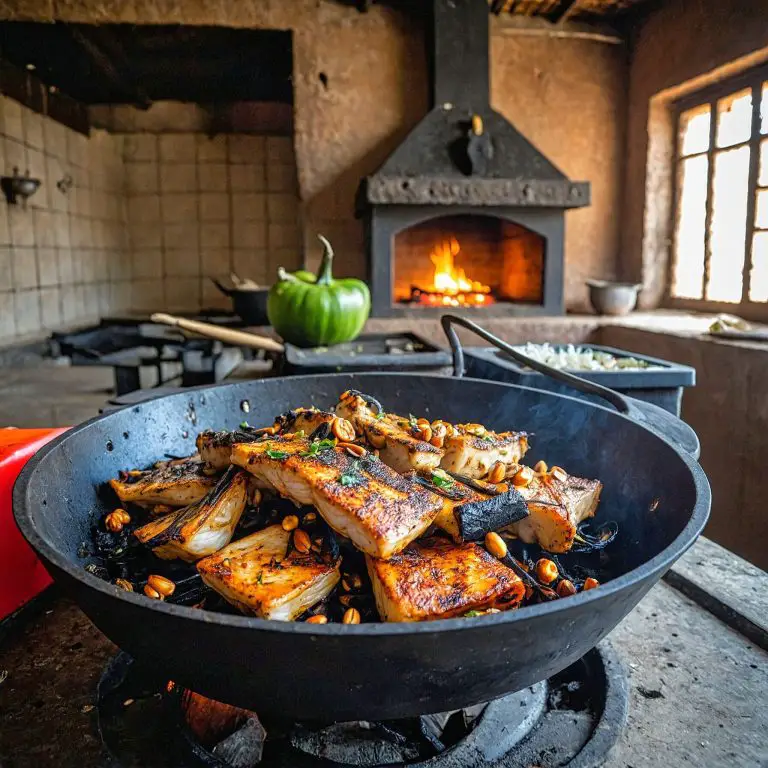
Mukbaza is a banana-based dish enjoyed in Djibouti and other parts of the Horn of Africa, where bananas are a widely consumed fruit. In Djibouti recipes, mukbaza typically features mashed bananas mixed with flatbread or served alongside, creating a filling yet simple meal.
It can be eaten as breakfast or a light snack, providing natural sweetness and energy. Mukbaza highlights the way bananas are incorporated into both savoury and sweet traditions, reflecting the influence of neighbouring Somalia and Yemen. Its preparation is straightforward, making it a practical household dish. Families often enjoy it with tea, reinforcing the importance of shared meals and simple, nutritious foods in Djibouti’s daily life.
Among Djibouti recipes, mukbaza represents resourcefulness, using local produce in creative ways to create filling meals. It remains a common food across households, particularly valued for its affordability and accessibility.
4. Djibouti Banana Fritter
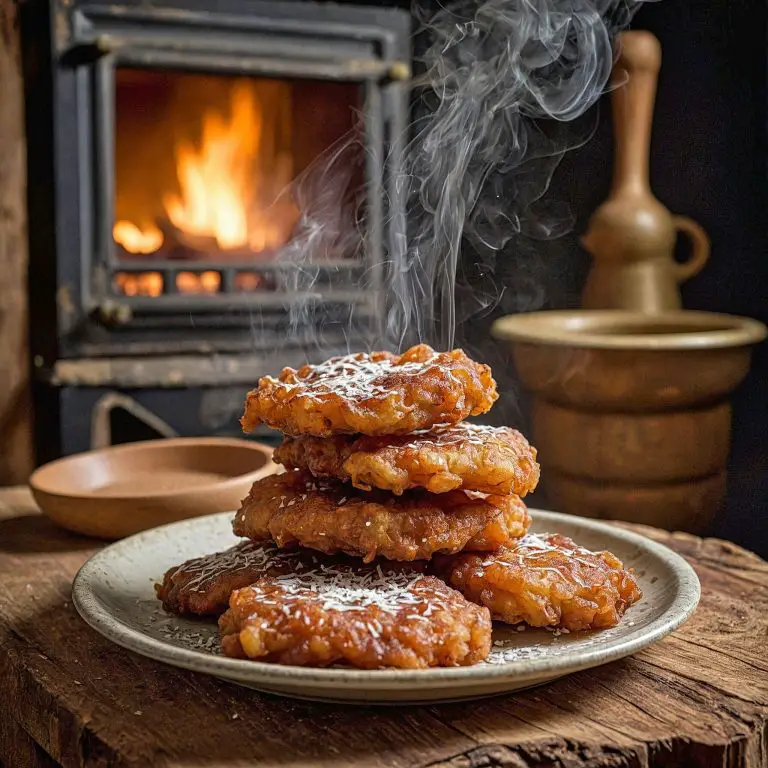
Djibouti banana fritters are deep-fried snacks made by coating sliced bananas in a batter of flour, sugar, and spices before frying until golden. This dish appears in many Djibouti recipes as a popular street food or homemade treat, often enjoyed with tea.
The fritters are crisp on the outside with a sweet, soft banana centre, making them appealing for both children and adults. They are particularly common during Ramadan as part of evening meals but are also enjoyed year-round as a snack. Banana fritters showcase the importance of bananas in Djibouti’s food culture, as they are an abundant and inexpensive fruit.
Their preparation is simple, requiring only basic ingredients, which ensures their popularity across households. Among Djibouti recipes, banana fritters highlight the blending of African and Indian Ocean influences, demonstrating how simple, fried foods remain an integral part of both festive and everyday dining traditions.
5. Xalwo
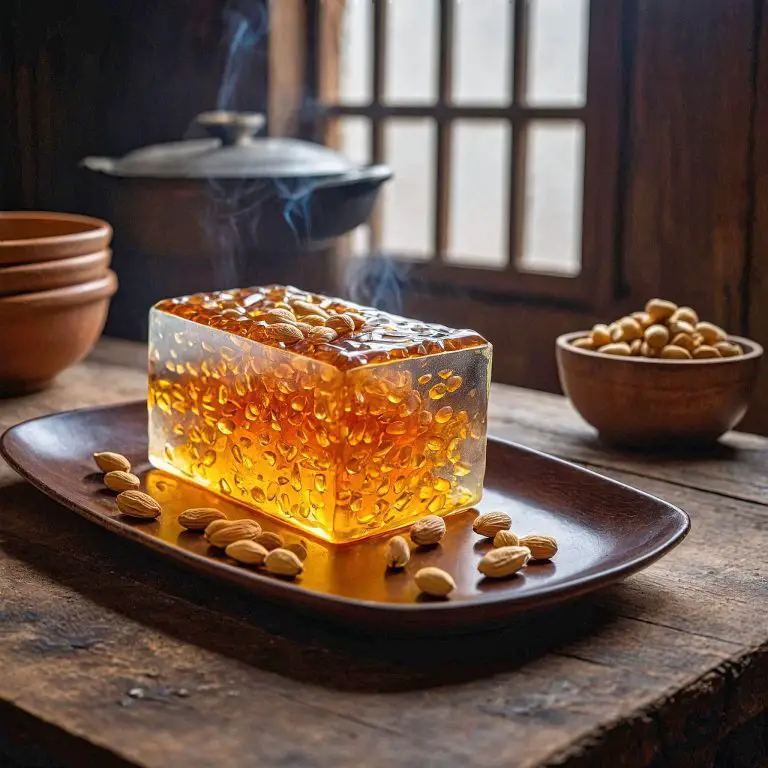
Xalwo, also known as halwa, is a sweet confection made with sugar, cornflour, ghee, cardamom, and nuts. In Djibouti recipes, xalwo is a popular dessert for weddings, Eid, and other celebrations, where it is served in small slices or cubes. Its chewy, jelly-like texture and aromatic flavour make it a distinctive treat.
Preparing xalwo requires patience, as the mixture must be stirred continuously until it thickens, but the result is a dessert associated with joy and festivity. My Halwad is a variation often prepared with family-specific touches, such as extra spices or decorative nuts. This sweet is more than just food—it symbolises hospitality and celebration, often shared with guests to mark important occasions.
Among Djibouti recipes, xalwo is one of the most iconic desserts, showing how sweets play a role in cultural and religious traditions across the Horn of Africa.
6. Samosas
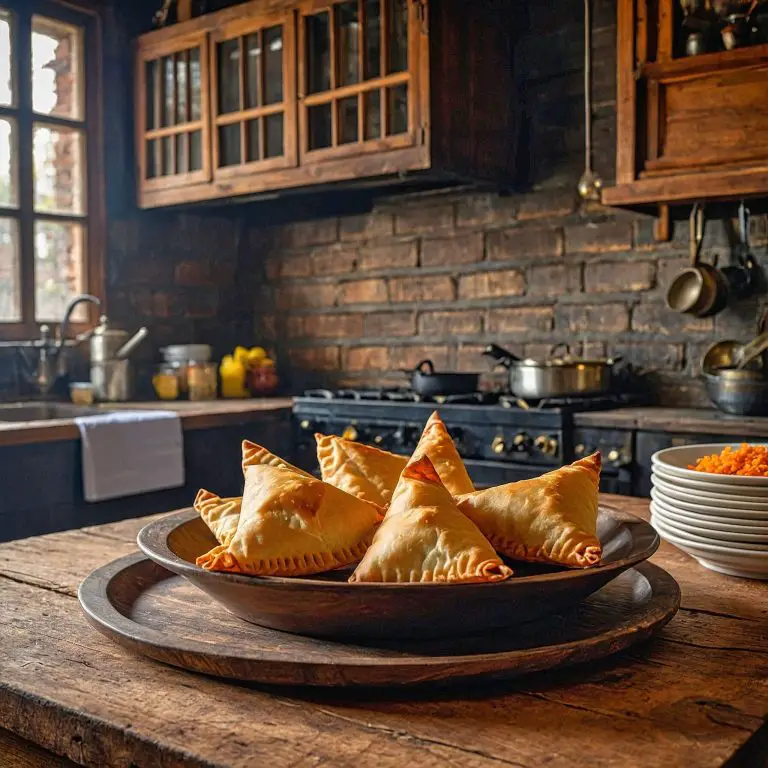
Samosas are triangular pastries filled with spiced meat, lentils, or vegetables, fried until golden and crisp. They are a staple snack in Djibouti recipes, widely sold by street vendors and prepared in households, especially during Ramadan.
The thin dough encases savoury fillings that vary from household to household, often featuring ground beef, chicken, onions, or peas seasoned with garlic and chili. Samosas are eaten as appetisers, snacks, or side dishes, served hot with dipping sauces or tea. Their popularity in Djibouti reflects centuries of trade along the Indian Ocean, where Indian, Arab, and African cuisines blended.
Today, samosas are enjoyed across all communities, symbolising both everyday comfort and festive indulgence. Among Djibouti recipes, samosas remain one of the most recognisable and widely consumed foods, showing the enduring appeal of fried pastries as portable, flavourful, and social snacks.
7. Cambaboor
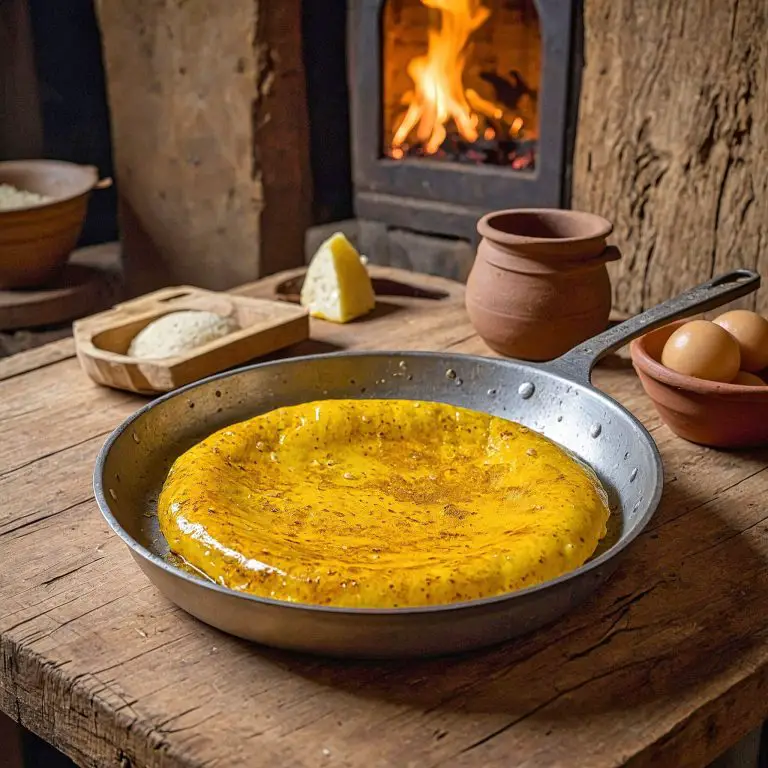
Cambaboor is a type of spiced pancake commonly eaten in Djibouti, often flavoured with saffron or turmeric for colour and aroma. The batter, made from flour and water, is cooked on a hot pan, creating soft, slightly chewy pancakes with a golden hue.
In Djibouti recipes, cambaboor is usually served for breakfast with sugar, honey, or yoghurt, but it can also be paired with savoury dishes like stews. The spice blend gives the pancakes a distinctive flavour, setting them apart from plain flatbreads. Cambaboor highlights the role of simple, grain-based dishes in Djibouti’s cuisine, offering sustenance and flexibility.
Families often prepare it in large batches, making it convenient for both immediate meals and leftovers. Among Djibouti recipes, cambaboor reflects the creative use of spices, turning a basic batter into a dish that is both nourishing and culturally significant in everyday dining.
8. Djibouti Fah-fah

Fah-fah is a hot meat soup prepared with goat or lamb, onions, tomatoes, and spices. It is considered one of the most popular Djibouti recipes, valued for its warmth and nutrition. The meat is simmered until tender, while the broth develops a rich, spiced flavour.
Fah-fah is often served with bread, which diners use to scoop up the soup, reflecting the communal eating practices common in Djibouti. It is particularly popular in cooler seasons and is frequently eaten at roadside cafés or homes as a hearty meal. The dish showcases the importance of livestock in Djibouti’s food culture, with goat meat being especially common.
Fah-fah is both everyday sustenance and comfort food, enjoyed across different regions of the country. Among Djibouti recipes, it stands out for its balance of simplicity and flavour, remaining a staple in both rural and urban households.
9. Bariis iyo Kaluun
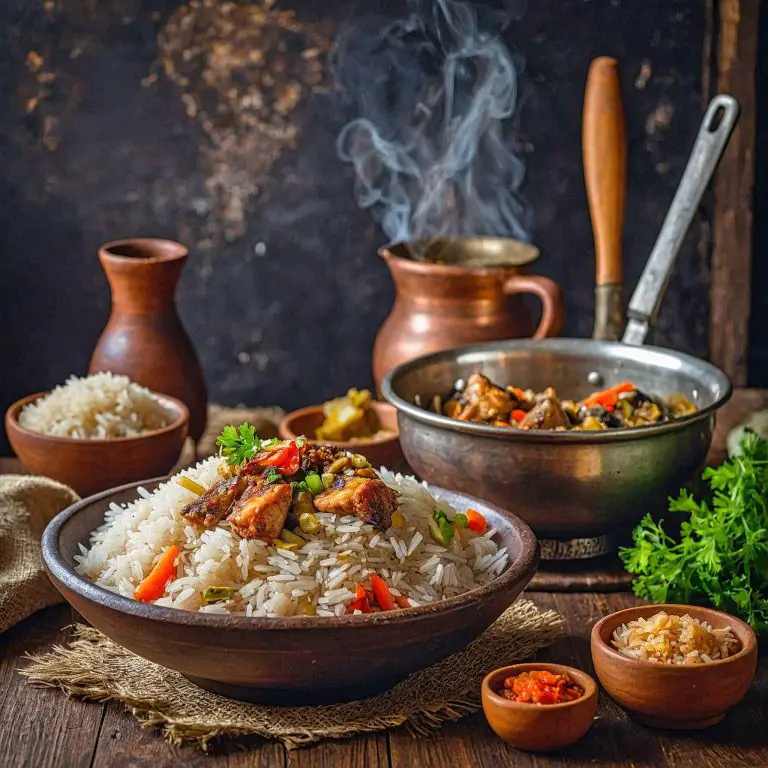
Bariis iyo kaluun, meaning rice with fish, is a dish that highlights Djibouti’s coastal geography and reliance on seafood. In Djibouti recipes, this dish is prepared by cooking rice in a spiced tomato sauce, often flavoured with cardamom, cinnamon, or cloves, and serving it with fried or stewed fish.
The result is a fragrant, colourful meal that brings together land and sea. It is commonly eaten in coastal households and restaurants, particularly on Fridays or special occasions. Bariis iyo kaluun reflects the cultural connections between Djibouti and neighbouring Somalia, where similar rice dishes are common. The dish is both filling and versatile, with fish varieties depending on the daily catch.
Among Djibouti recipes, bariis iyo kaluun symbolises how seafood and rice, both staple foods, combine to form meals that are at once practical, celebratory, and deeply rooted in tradition.
10. Skudahkharis
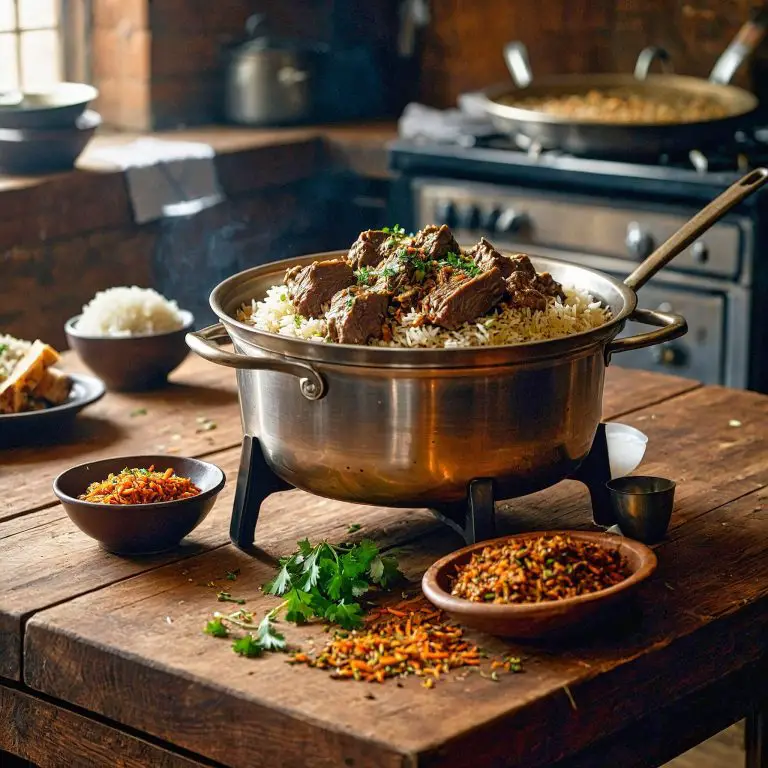
Skudahkharis is a lamb and rice stew considered one of Djibouti’s most traditional dishes. The lamb is simmered with onions, tomatoes, garlic, and spices, then combined with rice to create a thick, hearty one-pot meal.
In Djibouti recipes, skudahkharis is frequently prepared for large gatherings, weddings, and family events, as it can be made in large portions to feed many guests. Its origins are linked to Arabian influences, but it has become a hallmark of Djiboutian cooking, reflecting the fusion of African and Middle Eastern traditions. Skudahkharis is valued for its comforting qualities, providing warmth and sustenance with every serving.
It is typically eaten with bread or accompanied by salads. Among Djibouti recipes, this dish demonstrates the importance of rice and lamb as foundational ingredients, symbolising abundance, celebration, and the strong communal nature of meals in Djibouti.
11. Dyed Rice | Rainbow Rice Palau
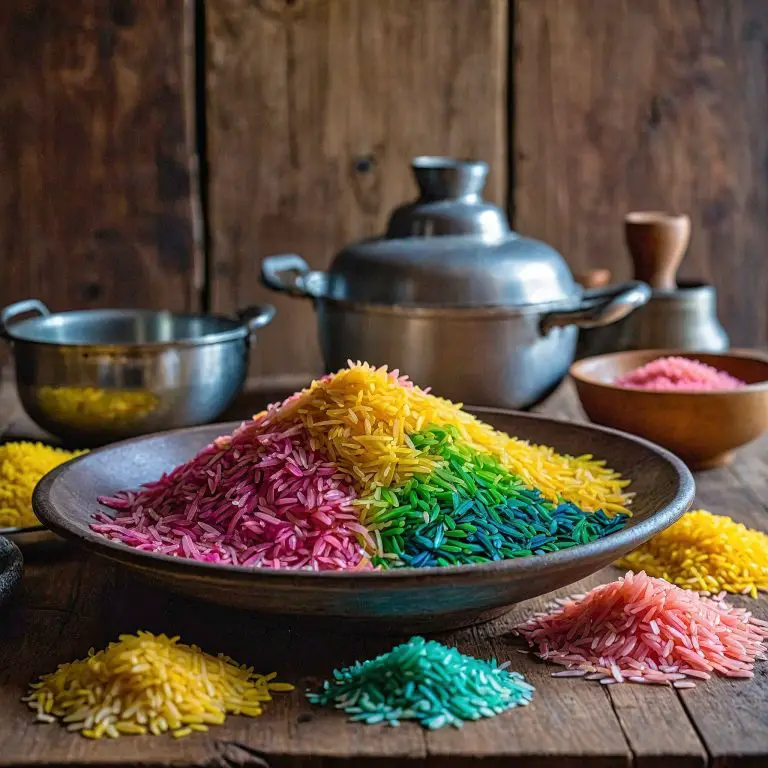
Dyed rice, also called rainbow rice or palau, is a colourful dish made by cooking rice with different natural colourings such as saffron, turmeric, or food dyes, producing vibrant layers. In Djibouti recipes, rainbow rice is prepared for festive occasions such as weddings and holidays, where presentation is as important as taste.
The rice is often seasoned with spices and sometimes paired with meat or fish, creating a celebratory meal. The bright colours symbolise joy and abundance, making the dish popular at large gatherings. Dyed rice reflects the influence of Arabian and Indian Ocean cuisines, which introduced spiced rice dishes to the region.
Families prepare it to impress guests and mark important life events. Among Djibouti recipes, rainbow rice stands out for its visual appeal as well as its taste, showing how food can serve both cultural and symbolic roles in celebration.
Summing Up: Scrumptious Djibouti Recipes You Create In Minutes and Djibouti Food
In conclusion, it is clear that Djibouti’s recipes offer an array of flavors and dishes that are sure to spice up any palate. From succulent impamba to fragrant hawiye, each dish is unique and bursting with flavor.
From the light and slightly sour flavor of the national dish, suqaar, to the comfort of a warm bowl of shurba soup, from the sweet-tart flavors of raabay to the savory flavors of Suugo sheekh, there is a wonderful array of dishes to explore and enjoy.
Furthermore, these recipes are fairly simple to recreate and are sure to add an extra zest to any meal. By exploring these recipes, you can experience a whole new world of flavor and bring a taste of Djibouti to your own kitchen.
By trying out these recipes and sharing them with others, you can explore the cuisine of Djibouti. As acclaimed novelist Yann Martel said, “You don’t just eat the food. You eat the culture, the history and the story”. As you cook up these recipes, take the time to savor the history and culture behind them.

2 comments
I cant believe they didnt include the recipe for Suugo Suqaar from Djibouti! Its a classic dish that should definitely be on this list. Who doesnt love a good hearty beef stew? #MissingOut
Are we really going to argue over which Djibouti recipe is the most scrumptious? I mean, Laxoox, Sabayaad, Mukbaza, or Banana Fritters… they all sound delicious! Lets just eat them all!
Comments are closed.